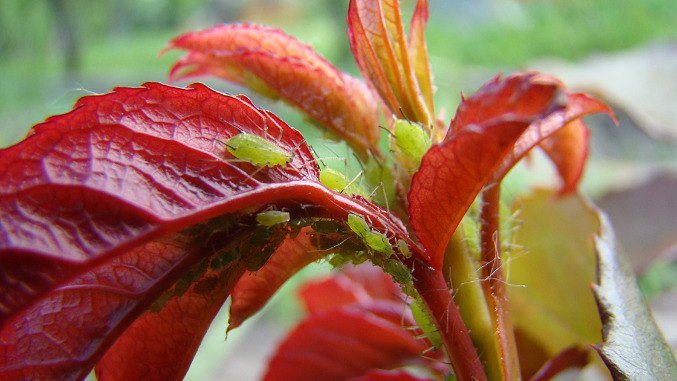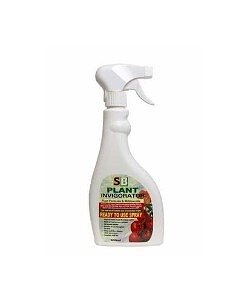
March Bug of the Month: Aphids
2 Minute Read
Dr Ian Bedford tells us everything we need to know about the 'bug of the month' for March, aphids.What do aphids feed on?
With the arrival of spring, the plants that have remained dormant throughout winter will begin growing again and start to produce fresh new leaves, and this tender new foliage will be a signal for the various herbivorous invertebrates that feed on plants, to become active again and for some, to begin producing their seasonal colonies.
The most ubiquitous of these invertebrates will be aphids, the sap-sucking bugs that we more commonly refer to as greenfly and blackfly. The taxonomic family Aphididae, to which greenfly and blackfly belong, is assumed to have first evolved around 80 to 150 million years ago, with fossil evidence suggesting that they initially fed on the sap of coniferous plants.
However, over the millions of years that followed, aphids diversified into countless different species as they evolved in tandem with plants. But along their evolutionary journey, aphids became an important food source for many other creatures that have subsequently become dependent on them for their own survival.
Nowadays, within most terrestrial habitats, aphids are a key constituent of the primary consumer level that sustains nature’s food webs, the ecosystems that they create and the biodiversity within.
However, for species to exist as a primary consumer at the bottom of a food chain, they have to reproduce rapidly, and at a faster rate than they are being killed by the creatures who feed on them.
However, for species to exist as a primary consumer at the bottom of a food chain, they have to reproduce rapidly, and at a faster rate than they are being killed by the creatures who feed on them.

What is the reproduction cycle of aphids?
Speeding up their reproduction rate during the spring and summer months when predation will be high, by continually giving birth to live young without having to mate with males. Through environmental triggers such as senescing host plants or overcrowding, aphids can begin producing winged individuals that will then disperse to new locations.
Then, as autumn approaches, aphids start producing males to mate with females who will then produce and lay eggs, which for most species will become the overwintering stage of the aphid’s annual lifecycle. It’s this highly effective reproduction process that ensures aphids can survive at the bottom of nature’s food chains, which then sustains the many predators and parasites that depend on them for their own survival.

How to control aphid infestations
Despite aphids being the food of many other creatures, it’s often the case that their colonies will increase to a size that can adversely affect the growth of cultivated and ornamental garden plants, and that gardeners and growers will want to control them. Although there are chemical pesticides available for killing aphids, these will invariably harm many beneficial creatures, which include bees and the aphid predators that’ll often be living amongst the aphids, such as ladybirds, hover-fly and lacewing larvae.
Unfortunately, killing the aphid predators, some of which will only have a single generation a year, will not only be detrimental to the garden’s ecosystem, but it’ll probably benefit the aphids, who can quickly re-establish their infestations with little or no natural control.
So, a more environmentally friendly option for controlling aphids on susceptible plants without harming the pollinators and the aphid’s predators, would be to leave smaller infestations alone where they’re not harming the plants and, for larger infestations, reduce aphid numbers using a non-toxic method, such as washing them off the plants with a fine spray of water or a non-toxic surfactant-based product such as SB Plant Invigorator.
So, a more environmentally friendly option for controlling aphids on susceptible plants without harming the pollinators and the aphid’s predators, would be to leave smaller infestations alone where they’re not harming the plants and, for larger infestations, reduce aphid numbers using a non-toxic method, such as washing them off the plants with a fine spray of water or a non-toxic surfactant-based product such as SB Plant Invigorator.

Natural aphid controls
How do you get rid of these pesky little bugs? We've got some tiny garden heroes to come and save the day. Live ladybirds and ladybird larvae are a solid choice. These well-known gardener's friends can decimate populations of aphids. Parasitic wasps and lacewing larvae are other options to combat aphids.find out more

Shop SB Plant Invigorator
SB Plant Invigorator controls of a wide range of important pest species including whitefly, aphid, spider mite, mealybug, scale and psyllid. It also helps prevent powdery mildew. Usable in integrated pest management regimes and compatible with a range of beneficial insects and mites.find out more
Tags: Natural Pest Control
Comments (0)
Why not be the first to send us your thoughts?
